Anthropic has unveiled an upgraded AI assistant, Claude 3.5 Sonnet, that can understand and interact with any desktop application in a human-like way, perhaps marking a new era of cross-platform automation and efficiency for businesses.
Anthropic?
Anthropic is an AI safety and research company founded in 2021 by former OpenAI researchers, including siblings Dario and Daniela Amodei. Based in San Francisco, the company focuses on developing AI systems that align with human values and safety principles.
Claude 3.5 Sonnet Can Interact With Your Computer Like A Human
Anthropic hopes its newly upgraded Claude 3.5 Sonnet is a substantial improvement over its predecessor and boasts that the new version has enhanced capabilities in coding and tool use. Most notably, it introduces a revolutionary feature now in public beta computer use. This feature enables the AI to actually interact with computer interfaces much like a human user, e.g. viewing screens, moving cursors, clicking buttons, and typing text.
As Anthropic says on its website: “Claude 3.5 Sonnet is the first frontier AI model to offer computer use in public beta”. However, the company also admits that, “At this stage, it is still experimental – at times cumbersome and error-prone. We’re releasing computer use early for feedback from developers and expect the capability to improve rapidly over time.”
What Can Claude 3.5 Sonnet Do?
With its new computer use feature, Claude 3.5 Sonnet can essentially automate tasks across various software applications without the need for specialised integrations or APIs. Developers can direct Claude to perform actions by providing instructions that the AI translates into computer commands. For example:
– Automating repetitive processes. Claude can handle mundane tasks such as data entry, form filling, or scheduling, freeing up human resources for more strategic activities.
– Software development and testing. Companies like Replit, for example, are using Claude to build features that evaluate apps during development, enhancing productivity and code quality. As Anthropic says,“Replit is using Claude 3.5 Sonnet’s capabilities with computer use and UI navigation to develop a key feature that evaluates apps as they’re being built for their Replit Agent product”.
– Complex multi-step tasks. The AI can carry out operations that require dozens or even hundreds of steps, thereby streamlining workflows that would otherwise be time-consuming.
Benefits for Business Users
The introduction of Claude 3.5 Sonnet, therefore, appears to offer several potential advantages for businesses, such as:
– Increased efficiency. Automating repetitive and complex tasks reduces operational bottlenecks.
– Cost savings. By handling tasks traditionally performed by humans, businesses can lower labour costs.
– Enhanced productivity. Employees can focus on higher-level functions that require human judgement and creativity.
– Scalability. The AI can handle increasing workloads without the need for proportional increases in staff.
Examples of Business Applications
Examples of how companies across various industries are exploring Claude’s potential include:
– Asana is using it to enhance project management by automating task assignments and updates.
– Canva is using Claude to assist in the designing and editing process, making creative tools more accessible.
– DoorDash (the US-based on-demand food delivery service) is using it to streamline logistics and order management through automated processes.
The Browser Company (a New York-based technology startup with its ‘Arc’ browser) is using Clause to automate web-based workflows to improve user experience.
How Good Is It?
Claude 3.5 Sonnet is reported to have demonstrated impressive results on industry benchmarks, showcasing its advanced capabilities in coding and tool usage. In the realm of coding excellence, the model improved its performance on the SWE-bench Verified benchmark from 33.4 per cent to an impressive 49.0 per cent. This leap not only marks a significant advancement over its predecessor but also surpasses all other publicly available models. Such a performance appears to show superior coding skills and its potential to handle complex programming tasks effectively.
In terms of tool use proficiency, Claude 3.5 Sonnet enhanced its scores on the TAU-bench, an agentic tool use benchmark, from 62.6 per cent to 69.2 per cent in the retail domain. This improvement appears to show the model’s increased ability to utilise tools efficiently within specific industry contexts, thereby reflecting a good level of adaptability and practical utility in real-world scenarios.
Also, GitLab tested the model for DevSecOps tasks (integrating security into software development and operations tasks) and observed notable enhancements. “GitLab found it delivered stronger reasoning—up to 10 per cent across use cases—with no added latency,” noted Anthropic. This improvement without compromising speed appears to make Claude 3.5 Sonnet a good candidate for things like powering multi-step software development processes, offering both efficiency and high-level reasoning skills.
Claude 3.5 Haiku Too
In addition to Claude 3.5 Sonnet, Anthropic says it’s set to release Claude 3.5 Haiku later this month. This AI model matches the performance of Claude 3 Opus, the company’s previous largest model, but offers similar speed and cost to the earlier Haiku version.
Claude 3.5 Haiku is particularly adept at coding tasks, scoring 40.6 per cent on SWE-bench Verified (a benchmark for coding accuracy and efficiency). Its low latency and improved instruction-following appear to make it ideal for user-facing products, specialised sub-agent tasks, and handling large volumes of personalised data.
Safety Measures and Concerns
However, while the capabilities of Claude 3.5 Sonnet may be impressive, there are some valid concerns regarding potential misuse. For example:
– The risk of malicious activities. The AI’s ability to interact with desktop applications could be exploited for harmful purposes if not properly secured.
– Some error-prone behaviour. Anthropic acknowledges that the computer use feature is still experimental and may be cumbersome or inaccurate at times.
– Data privacy. The AI’s interaction with sensitive data requires stringent security protocols to prevent breaches.
Addressing These Concerns
Anthropic has, however, taken a proactive approach to trying to address potential safety concerns surrounding Claude 3.5 Sonnet. For example, the model underwent joint pre-deployment testing by the US AI Safety Institute and the UK Safety Institute, ensuring that safety evaluations were thorough and rigorous before release.
To manage risks responsibly, Anthropic follows the ASL-2 Standard under its Responsible Scaling Policy, which aims to mitigate any catastrophic risks associated with advanced AI systems. This policy reflects some commitment to developing AI that aligns with safe and responsible practices.
Also, Anthropic has developed new classifiers to detect potentially harmful uses of the model’s computer interaction capabilities. These classifiers are designed to identify and prevent misuse, such as spam, misinformation, or fraud, ensuring that Claude’s actions remain aligned with safe and ethical standards.
As Anthropic says, “Because computer use may provide a new vector for more familiar threats such as spam, misinformation, or fraud, we’re taking a proactive approach to promote its safe deployment.”
Competitors
With the AI landscape evolving rapidly, it’s not surprising that there are several key players developing similar technologies. For example, OpenAI is working on AI agents capable of automating software tasks, with their GPT-4 model being a notable competitor. Also, Microsoft is introducing tools for building AI agents that can perform a variety of tasks across software platforms. Salesforce too is developing AI agent technology aimed at transforming customer relationship management and Amazon’s Adept is focusing on training models to navigate software and websites.
Anthropic, however, is hoping to distinguish itself through its commitment to safety and alignment with human values, aiming to balance innovation with responsibility.
What Does This Mean For Your Business?
For Anthropic, the launch of an improved Claude 3.5 Sonnet marks a defining moment, potentially establishing the company as a leader in AI-driven business automation. By offering Claude’s computer interaction feature in public beta, Anthropic is positioning itself as a pioneer in cross-platform automation, a niche not yet fully realised by its competitors. This strategic move could strengthen its standing in an increasingly competitive field, as Anthropic’s focus on safety and ethical standards differentiates it from the likes of OpenAI and Microsoft. The enhanced capabilities and unique safety protocols built into Claude 3.5 Sonnet could provide Anthropic with a distinct advantage, particularly in appealing to businesses that are really set on only using the most secure and responsible AI applications. This focus may allow Anthropic to capture a segment of the market that is as concerned with AI safety as it is with productivity gains.
For competitors, Claude 3.5 Sonnet’s public beta launch raises the stakes. Companies like OpenAI, Microsoft, and Salesforce, which are also investing in AI agents for automation, will need to keep pace as Anthropic introduces new, tangible functionality that places AI capabilities directly onto the user’s desktop environment. These competitors may find themselves under increased pressure to accelerate their own development timelines, incorporate safety features, and refine their offerings to ensure they remain competitive with Claude’s human-like computer interaction abilities. For Adept (now part of Amazon), and other companies working to develop similar cross-platform tools, Anthropic’s progress may indicate the importance of safety features and real-world usability in building industry confidence.
The introduction of Claude 3.5 Sonnet offers substantial potential benefits for UK businesses choosing to incorporate this AI assistant into their operations. For organisations across sectors such as finance, healthcare, and logistics, Claude’s ability to handle repetitive tasks, complex multi-step workflows, and even creative processes could be transformative. By automating routine activities, such as data entry, scheduling, and system navigation, Claude 3.5 Sonnet could drive significant efficiency gains, freeing employees to focus on more strategic or human-centric tasks that require critical thinking and nuanced judgement. For UK businesses, which are often under pressure to maximise productivity while controlling operational costs, Claude could streamline workflows, reduce human error, and speed up project timelines, all while potentially lowering staffing costs.
Also, the scalability of Claude 3.5 Sonnet could be particularly beneficial for SMEs in the UK, which may lack the resources for extensive manual operations. By leveraging Claude’s automation capabilities, these businesses could more easily expand their services or manage growing workloads without the need for proportionate increases in staffing. The AI’s coding and tool-use improvements may also mean that it can assist developers, customer service representatives, and project managers alike, helping businesses across industries achieve smoother, more integrated operations.
For businesses that advertise heavily on platforms or deal with customer service interfaces, Claude’s ability to operate across desktop applications could allow for quicker, more personalised responses to customer inquiries, making customer interactions more efficient. Overall, the arrival of Claude 3.5 Sonnet may empower UK companies to enhance operational efficiency, improve service quality, and navigate growth challenges with greater agility. By setting a high bar for safety and adaptability, Claude 3.5 Sonnet appears to represent not only a new technological asset for businesses but also a step forward in the adoption of ethical, practical AI in commercial settings.


